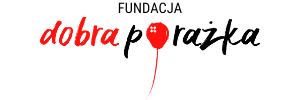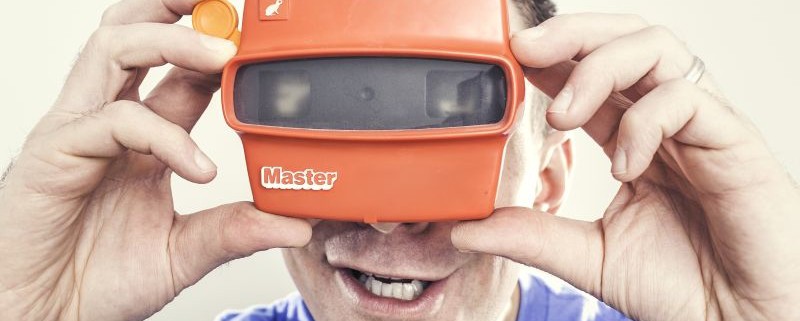Customer Discovery Interviews – your product will taste better if…
author: Michael Thomas Mahoney
A Practical Guide to Customer Discovery Interviews. Pro tips & tricks from Mike, you should use to carry on the best interview with your customer and collect valuable information to improve your product!
Last week, I tried to emphasize the importance of good experimental design in testing business hypotheses. I outlined some of the pitfalls and common mistakes that cause “supposedly” objective, quantitative data, to become tainted and biased, leading both young entrepreneurs and disconnected corporate management to chase after mirages.
I introduced my preference for early-stage, qualitative analysis via the Customer Discovery Interview, and I’ve gave some success stories to back up my position.
But I only teased, the concept, and I didn’t provide much meat.
So, this week, I present “A Practical Guide to Customer Discovery Interviews!”
Why Customer Discovery Interviews?
Because you don’t know, what you don’t know.
In addition to reducing the risk for a company or startup, by vetting an idea through the lens of actual customers and stakeholders, Customer Discovery Interviews allow you to find out what you don’t already know and would even never think to ask.
It is, as the name would suggest, a quest of discovery. It is a fact-finding mission. Its purpose is to discover not only the customer’s needs… but their wants, pains, motivations, habits, decision-making, work environment, hobbies, interests, other stakeholders involved……anything that might give you deeper insight into how you can innovate a solution just for them.
I know this sounds broad, and that’s why I’m going to walk you through it step-by-step.
Customer Discovery Interviews Overview

Photo by JESHOOTS.com from Pexels
Methodology
The Customer Discovery Interview process is simple to understand, but hard to master.
Really all it is is talking to potential customers and key stakeholders to find out where there exists a pain-point that’s big enough to present an opportunity to innovate and create a solution to alleviate that pain.
But don’t stop at just one! You need to conduct lots of interviews from multiple perspectives.
Mike’s Rule of Thumb:
Conduct as many interviews as money you plan to invest divided by what you think your time is worth.
Example: If you think you your precious time is worth $100 an hour, and a quality interview last 30 minutes…and you want to sink $10,000 into launching your startup. Then you should be conducting 200 interviews.
200 = $10,000/$50
But wait Mike!? That’s insane! That doesn’t scale.
You’re right, that is insane…because when you’re starting up, your time is waaaaaaay more valuable. Give yourself some credit! Also, once you get good at conducting interviews, don’t be surprised if your average interview lasts 45 minutes to an hour.
If you’re a pro: 25 = $10,000/$400
25 interviews just might do the trick. But the real goal is to keep going until you discover that ah-ha moment where all the information from your previous interviews falls into place. The moment when somebody mentions that one key detail you’ve yet to discover that leads to an actionable insight and real opportunity.
Let’s recap, Customer Discovery Interviews:
Help you
- Learn who your end users are
- Learn who the buyers are
- Learn who the decision makers are
- Identify other stakeholders involved
- Identify the best channels to reach your customers
- Introduce you to your first potential customers
- Understand how purchasing decisions are made
- Uncover customer pain points and unmet needs
But how do I conduct them?
Well, first you are going to need to prepare. I assume you have some idea about who your target customers are and some of the key stakeholders involved. Make a list. Start to identify some ideal candidates to interview, and then do some research on them. Write up some open-ended questions, and tailor them to the specific interviewee. Some questions will be the same across interviews, that’s okay…but the import thing to remember is this is not a survey! This is a conversation.
Lastly, you’ll want to start contacting and scheduling your interviews. This can be hard, but if you’ve done your homework, you can massage your target’s ego in the subject line of an email or LinkedIn message and typically get a response.
I usually go for LinkedIn.
If you’re a student, play up that angle. Say you’re conducting research in their given field and you’d like to learn more. If you’re not a student, things get harder, but there are plenty of guides out there, so Google away. The important thing is to get on their calendar!
Best Practices for Preparation
- Identify interview candidates from each initial stakeholder group (you’ll identify more later)
- Get on their calendar (in-person meetings are best)
- Prepare questions in advance tailored to each interviewee (this is not a survey)
- Make sure questions are open-ended, relevant, and unbiased (design questions that make them think and make them talk)

Photo by Helena Lopes from Pexels
Now comes the interview
There are some things you want to keep in mind. Your job is to find out as much as you can. You should have questions prepared, but this is just a guide. If the interviewee goes off on a tangent, let them. If they’re ranting, there’s emotion behind it. If there’s emotion behind it, there’s a pain. If there’s a pain, there’s an opportunity. I know this sounds evil, but remember, you’re ultimately solving for a pain. So, the karma balances out in the end.
Most blogs and other sources on Customer Discovery Interviews suggest conducting the interview with two people. And that’s with good reason: one person to act as scribe, and the other to conduct the interview.
I prefer to conduct my interviews solo. I find it kind of weirds people out and can be intimidating being interviewed by two people. I prefer a one-on-one situation. But this works for me.
I feel the person out. If I read their body language and see that they’re comfortable, I’ll ask if I can take notes on my laptop or record the conversation. If I’m in a professional environment where security and proprietary information is a concern I’ll just take a pad and pencil along and jot down important notes in shorthand.
Remember, if you do your homework ahead of time you won’t be reading off a sheet of paper and having to write down every little thing they say.
Best Practices for Interview
- 2 interviewers are preferred (1 interviewer, 1 scribe)
- Questions are a guide not a script (this is not a survey)
- Watch body language for cues (if someone hesitates or says ‘yes’ when you know they really mean ‘no’ follow up on it or make a note)
- Immediately transcribe notes afterward while insights are still fresh in your head (do it)
Do’s and Dont’s
- DONT ask “Would you use this/buy this?” (leading question/people lie)
- DONT try to demo your product unless they ask you to (you’re on a fact-finding mission)
- DONT ask leading questions (you’re not trying to prove yourself right)
- DONT offer solutions (when you don’t even understand the problem)
- DO listen more than you talk (should be around 20% talking 80% listening)
While conducting the interview, it’s okay to have awkward pauses. A long pause might allow the interviewee to think a little more about something you were just discussing, or they might just offer up additional information to try and end the silence. Wait it out.
Pro Tips
- Ask if it’s okay if you record the conversation (few people are cool with this but it’s worth a shot)
- Follow up vague answers with, “Tell me more about that.” (or try the 5 whys)
- Ask them to walk you through their work process (people often say one thing and do another)
- Always end with these two questions:
- “Is there anything else that I should have asked you?” (In case you missed your mark)
- “Do you know anyone else that I should talk to, and can you make an introduction?” (this is the most helpful tip of all, and if you conducted a quality interview, people are usually happy to help and offer a contact before you even ask for them)
Also, important to note. Look around and be observant while you’re conducting the interview. Look for anything that might seem out of the ordinary, and if you have a question about it, ask it!
Ask them to describe certain tasks, and then ask them if you can watch as they carry out that task. Look to see if what they describe matches up with what they’re actually doing. Often times it doesn’t. Often people have developed workarounds to problems in their daily routines that have become so used to that they forget that what they’re doing is out of the ordinary.
Finally, when it’s all done, follow up with something along the lines of, “Is there anything I’m forgetting to ask you?” to give them one last opportunity to talk about something they may be missed, and lastly, “Is there anyone else, I should talk to, and can you introduce me to them?”
This will keep the trail hot because as I said at the beginning, you don’t know, what you don’t know. So, you need to keep the leads coming.

Photographer: Rawpixel.com; source: stocksnap.io
After the meeting
Don’t forget to summarize your notes after the meeting. I recommend doing this immediately afterward in some standardized form.
The format I use is a report of sorts:
– Name, Title
– Contact Info
– Brief Description, Etc.
– NAME gave the following metaphor to describe BLANK
– Most memorable quote
– Motivations
– General Opinion
– Criticisms
– Compliments
– Suggestions
– Additional Notes
Oh, and one last thing, check the weather and the traffic ahead of time. The last thing you want is to be sweating your ass off and 20 minutes late. If you’re uncomfortable, they’re going to be uncomfortable as well, and things going to go badly.
I hope this was helpful. If so, let me know in the comments below or drop me a line on LinkedIn.
About the Author: Michael Thomas Mahoney is an American graduate student, from Virginia Commonwealth University, completing his master’s research in Product Innovation by working abroad in Gdansk, Poland as the International Partnerships Specialist for Clipster, Poland’s first and only co-living/co-working accelerator program for digital nomads.
Heading picture source: gratisography.com



